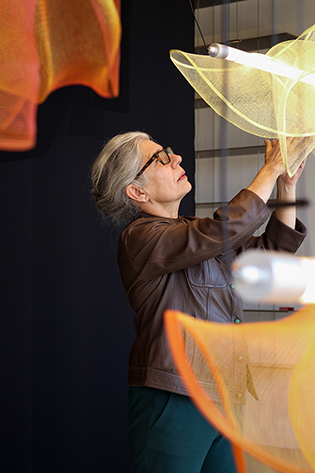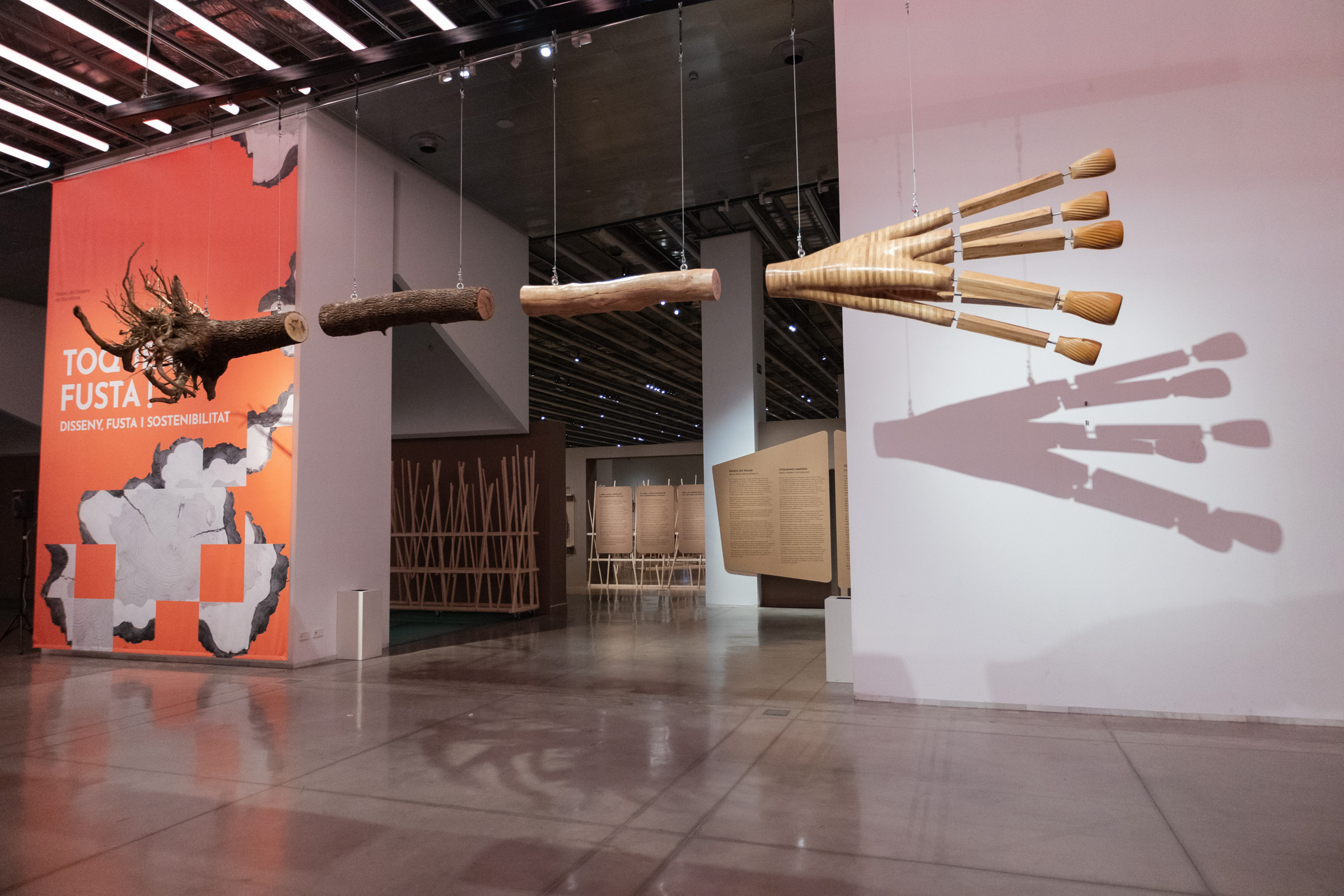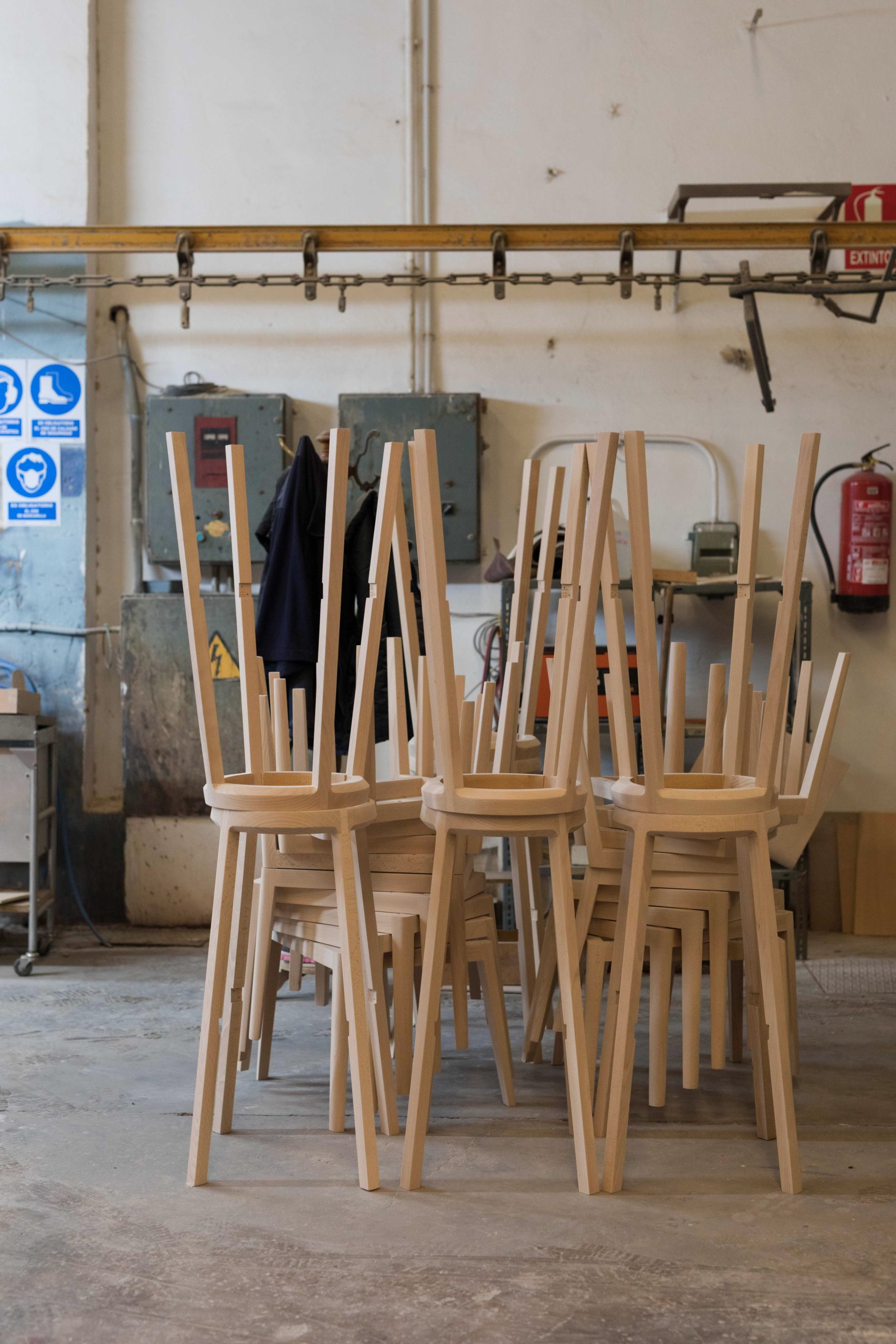How does one even begin to capture in words the character and spirit of Ray Eames? In partnership with her husband Charles, she was one half of what was arguably the twentieth century’s most productive and iconic design office. She was quite brilliant, possessing an unparalleled creative mind. A petite figure when compared to her much taller husband, Ray nevertheless had a particularly distinctive look: often seen wearing a blouse, square-necked jumper and dirndl skirt (a full, wide skirt with a tight waistband), she had an offbeat, audacious edge—it was a wonderfully characteristic alternative to the ‘Mad Men’ fashion clichés of the time. And yet despite her genius, as a woman she would frequently take a back seat to Charles, a consequence of the prevailing male and female gender stereotypes.

Ray Eames. Photo © Pat Kirkham (1983) via Pioneering Women of American Architecture.

Ray and Charles Eames. Image via Vitra Design Museum.
When Ray and Charles appeared on NBC’s ‘Home’ show in 1956 to discuss their work and launch the new Eames Lounge Chair, host Arlene Francis introduced Ray with the words: ‘almost always when there’s a successful man, there is a very interesting and able woman behind him.’ At this point, Charles looks extremely uncomfortable and when Ray enters the set, Francis goes on to say: ‘this is Mrs Eames and she’s going to tell us how she helps Charles design these chairs…’ Ray is evidently pained by this and the situation is exacerbated by a host intent on treating her as secondary to ‘Charles’s success’. Francis’s deprecating manner towards Ray, doubtless a product of a 1950s American narrative on the role of women in the household, is exasperating. Ray might have been seen as secondary, but in truth she was anything but. The excellent 2011 documentary film Eames: The Architect and the Painter, captures the magic of Charles and Ray Eames and the Eames Office. Most importantly, it shows the impact that Ray’s creativity had on building the Eames legacy.
Ray Kaiser was born in 1912 in Sacramento, California. Her early passions in life were art and ballet. Between 1931 and 1933, she attended the Bennett School for Girls in Millbrook, New York, a one-time progressive liberal arts college. From 1933, Ray studied painting under the artist Hans Hoffman at The Art Students League of New York. Hoffman had a significant role in the development of abstract expressionism. Ray was a founding member of the ‘American Abstract Artists’ (AAA) group, and she was centrally involved in the New York art scene at the time: AAA worked hard to promote abstract expressionism, an art form that was then disregarded by major museums and galleries. Ray had an acute sense of colour and composition, a penchant for detail, strong spatial awareness, technical capacity and an appreciation of organic forms—such abilities were later central to her creative endeavours at the Eames Office. Ray went onto work at the Cranbrook Academy of Art in Michigan and it was here that she met Charles. She was asked to help with the preparation of drawings and models that both Charles and the Finnish American architect Eero Saarinen were submitting to a furniture design competition, organised by the Museum of Modern Art. Ray and Charles were immediately smitten with each another and married in 1941. They relocated to California, where they established their studio in Venice Beach and built their lifelong home in Pacific Palisades: the Eames House also known as ‘Case Study House 8’.

Eames House. Photo by Leslie Schwartz & Joshua White, courtesy of Eames Office via Dezeen.

Charles and Ray on the La Chaise prototype, 1948. Image © Eames Office, LLC via Curbed.
Together, Ray and Charles Eames worked in partnership until Charles’s death in 1978. Their collective contribution to design as a wide-ranging medium was and remains truly phenomenal. From art to architecture, furniture to film, toys to textiles and much more, the Eameses set about their work with absolute determination and unmitigated passion. Still, as demonstrated by their 1956 appearance on NBC’s ‘Home’ show, Ray was often overshadowed by Charles’s greater public profile—despite his insistence on the central contribution she made to their work. Architectural and design convention at that time maintained that designs were attributed to the male of any male–female partnership, and thus Ray was unfairly deemed the lesser partner. Moreover, Charles would usually act in the capacity of spokesperson for their work—doubtless a further reason why he was given a greater level of recognition. But, it is with certitude that Ray and Charles were a partnership, balancing one another’s strengths and weaknesses, each contributing equally to the entirety of their design oeuvre.

The Eames Dot Pattern was designed by Ray in 1947. Image © Eames Office, LLC via Maharam.
Ray died on 21 August 1988, ten years to the day after Charles. She had designed their respective ash caskets. Buried together, even in death Ray was able to maintain her design connectedness with her husband.

Ray and Charles Eames. Image © Eames Office, LLC.
Bibliography
Eames Office: https://www.eamesoffice.com
Kirkham, P. (2019). Ray Kaiser Eames. [online] Pioneering Women of American Architecture. Available at: https://pioneeringwomen.bwaf.org/ray-kaiser-eames [Accessed 17 Jun. 2019].
Sellers, L. (2017). Women design. 1st ed. London: Frances Lincoln.
Woodward, D. (2015). Ten Things You Might Not Know About Charles and Ray Eames. [online] AnOther. Available at: https://www.anothermag.com/design-living/7945/ten-things-you-might-not-know-about-charles-and-ray-eames [Accessed 17 Jun. 2019].













